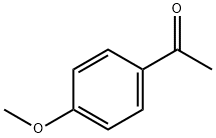4-Acetylbiphenyl
Synonym(s):4-Biphenyl methyl ketone;4-Phenylacetophenone
- CAS NO.:92-91-1
- Empirical Formula: C14H12O
- Molecular Weight: 196.24
- MDL number: MFCD00008749
- EINECS: 202-202-6
- SAFETY DATA SHEET (SDS)
- Update Date: 2024-12-18 14:15:32

What is 4-Acetylbiphenyl?
Chemical properties
Off-white to beige powder
The Uses of 4-Acetylbiphenyl
4-Acetylbiphenyl is involved in the study of inactivation of 7-ethoxy-4-trifluoromethylcoumarin ortho-deethylase activity by various arylalkynes. Further, it is used in the preparation of Schiffs base.
The Uses of 4-Acetylbiphenyl
Intermediates of Liquid Crystals
The Uses of 4-Acetylbiphenyl
4-Acetylbiphenyl was used to study the inactivation of 7-ethoxy-4-trifluoromethylcoumarin O-deethylase activity by various arylalkynes. It may be used in the synthesis of Schiffs base.
Purification Methods
Crystallise it from EtOH or acetone. It can also be distilled under reduced or atmospheric pressure. The semicarbazone has m 131-132o (aqueous EtOH). [Beilstein 7 H 443, 7 III 2134, 7 IV 1407.]
Properties of 4-Acetylbiphenyl
| Melting point: | 152-155 °C(lit.) |
| Boiling point: | 325-327 °C |
| Density | 1.2510 |
| refractive index | 1.5920 (estimate) |
| Flash point: | 168°C/8mm |
| storage temp. | 2-8°C |
| solubility | chloroform: soluble10mg/200microlitres, clear, colorless to faintly yellow |
| form | neat |
| form | Solid |
| color | White to Green to Brown |
| Water Solubility | insoluble |
| BRN | 1101615 |
| CAS DataBase Reference | 92-91-1(CAS DataBase Reference) |
| NIST Chemistry Reference | Ethanone, 1-[1,1'-biphenyl]-4-yl-(92-91-1) |
| EPA Substance Registry System | Ethanone, 1-[1,1'-biphenyl]-4-yl- (92-91-1) |
Safety information for 4-Acetylbiphenyl
| Signal word | Warning |
| Pictogram(s) |
 Exclamation Mark Irritant GHS07 |
| GHS Hazard Statements |
H315:Skin corrosion/irritation H319:Serious eye damage/eye irritation |
| Precautionary Statement Codes |
P264:Wash hands thoroughly after handling. P264:Wash skin thouroughly after handling. P280:Wear protective gloves/protective clothing/eye protection/face protection. P302+P352:IF ON SKIN: wash with plenty of soap and water. P305+P351+P338:IF IN EYES: Rinse cautiously with water for several minutes. Remove contact lenses, if present and easy to do. Continuerinsing. P332+P313:IF SKIN irritation occurs: Get medical advice/attention. P337+P313:IF eye irritation persists: Get medical advice/attention. |
Computed Descriptors for 4-Acetylbiphenyl
New Products
Tert-butyl bis(2-chloroethyl)carbamate 4-Methylphenylacetic acid N-Boc-D-alaninol N-BOC-D/L-ALANINOL 3-Morpholino-1-(4-nitrophenyl)-5,6-dihydropyridin- 2(1H)-one Furan-2,5-Dicarboxylic Acid Tropic acid 1,1’-CARBONYLDIIMIDAZOLE DIETHYL AMINOMALONATE HYDROCHLORIDE R-2-BENZYLOXY PROPIONIC ACID 1,1’-CARBONYLDI (1,2-4 TRIAZOLE) N-METHYL INDAZOLE-3-CARBOXYLIC ACID (2-Hydroxyphenyl)acetonitrile 4-Bromopyrazole 5-BROMO-2CYANO PYRIDINE 5,6-Dimethoxyindanone 5-broMo-2-chloro-N-cyclopentylpyriMidin-4-aMine 2-(Cyanocyclohexyl)acetic acid 4-methoxy-3,5-dinitropyridine 2-aminopropyl benzoate hydrochloride 1-(4-(aminomethyl)benzyl)urea hydrochloride diethyl 2-(2-((tertbutoxycarbonyl)amino) ethyl)malonate tert-butyl 4- (ureidomethyl)benzylcarbamate Ethyl-2-chloro((4-methoxyphenyl)hydrazono)acetateRelated products of tetrahydrofuran








You may like
-
 4-Acetylbiphenyl CAS 92-91-1View Details
4-Acetylbiphenyl CAS 92-91-1View Details
92-91-1 -
 Felbinac impurity A CAS 92-91-1View Details
Felbinac impurity A CAS 92-91-1View Details
92-91-1 -
 1975-50-4 98%View Details
1975-50-4 98%View Details
1975-50-4 -
 2-HYDROXY BENZYL ALCOHOL 98%View Details
2-HYDROXY BENZYL ALCOHOL 98%View Details
90-01-7 -
 2-Chloro-1,3-Bis(Dimethylamino)Trimethinium Hexafluorophosphate 221615-75-4 98%View Details
2-Chloro-1,3-Bis(Dimethylamino)Trimethinium Hexafluorophosphate 221615-75-4 98%View Details
221615-75-4 -
 14714-50-2 (2-Hydroxyphenyl)acetonitrile 98+View Details
14714-50-2 (2-Hydroxyphenyl)acetonitrile 98+View Details
14714-50-2 -
 118753-70-1 98+View Details
118753-70-1 98+View Details
118753-70-1 -
 733039-20-8 5-broMo-2-chloro-N-cyclopentylpyriMidin-4-aMine 98+View Details
733039-20-8 5-broMo-2-chloro-N-cyclopentylpyriMidin-4-aMine 98+View Details
733039-20-8
Statement: All products displayed on this website are only used for non medical purposes such as industrial applications or scientific research, and cannot be used for clinical diagnosis or treatment of humans or animals. They are not medicinal or edible.